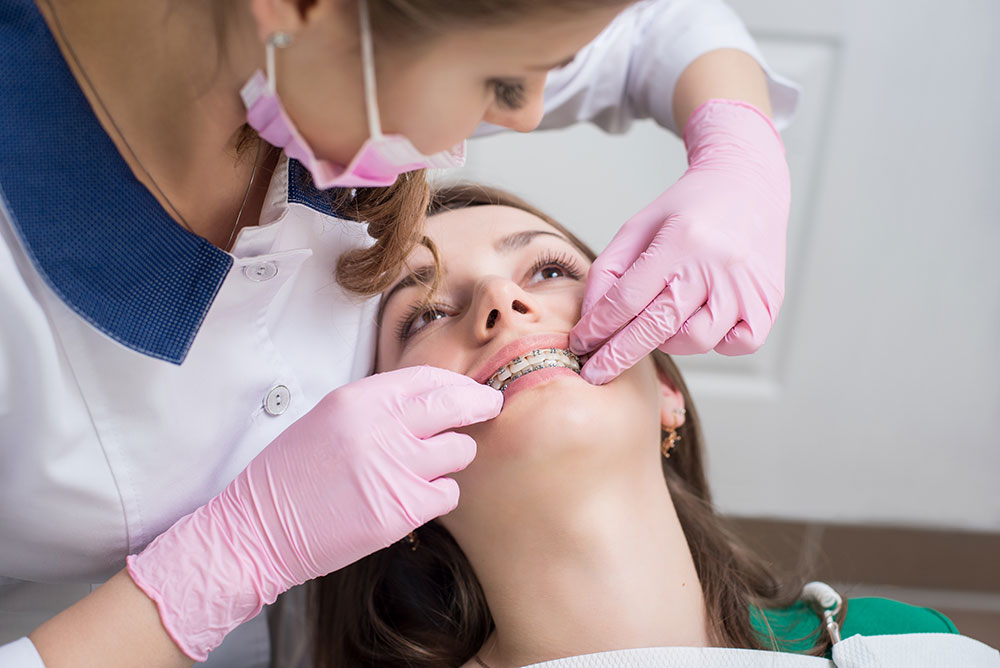6 Easy Facts About Legacy Orthodontics Shown
6 Easy Facts About Legacy Orthodontics Shown
Blog Article
9 Easy Facts About Legacy Orthodontics Explained
Table of ContentsA Biased View of Legacy OrthodonticsLegacy Orthodontics Things To Know Before You Get ThisThe Buzz on Legacy OrthodonticsThe Of Legacy OrthodonticsIndicators on Legacy Orthodontics You Need To Know
At Advanced Orthodontics, we give patients with a alternative therapy experience. Furthermore, we offer adjustable therapy schedules, adaptable payment options and a fun, satisfying experience. orthodontist. Telephone call ( 480) 357-4900 today for even more information and routine an appointment.An orthodontist is a dental expert trained to detect, avoid, and treat teeth and jaw abnormalities. Orthodontists function with individuals of all ages, from kids to grownups.
Malocclusion, or misaligned teeth, can bring about oral problems, consisting of dental caries, gum disease, and difficult or uncomfortable chewing. Not every person is born with straight teeth. If you have a negative bite or big spaces between your teeth, you may wish to seek advice from a dentist focusing on orthodontic treatment.
7 Simple Techniques For Legacy Orthodontics
( Photo Debt: DigitalVision/Getty Images) Orthodontists utilize repaired and detachable dental devices, like braces, retainers, and bands, to transform the position of teeth in your mouth. Orthodontic treatment is for dental irregularities, consisting of: Jagged teethBite problems, like an overbite or an underbiteCrowded teeth or teeth that are also far apartJaw misalignmentThe goal of orthodontic treatment is to enhance your bite.
While you might believe of orthodontists as mainly for kids or teenagers that require dental braces, they can remedy dental issues at any kind of age. Orthodontists attend university, dental institution, and orthodontic institution.
, but not all dental professionals are orthodontists. They concentrate on two locations: Just how to properly and securely relocate teeth Exactly how to effectively lead advancement in the teeth, jaw, and faceOnce an orthodontist has finished training, they have the choice to end up being board certified.
See This Report about Legacy Orthodontics
Misalignment, or malocclusion, is the most usual factor people see an orthodontist. It is genetic and is the outcome of dimension distinctions in between the upper and lower jaw or between the jaw and teeth. Malocclusion brings about tooth congestion, an askew jaw, or irregular bite patterns. Malocclusion is typically treated with: Your orthodontist connects metal, ceramic, or plastic square bonds to your teeth.
Some individuals require a headwear to aid move teeth into line with stress from outside the mouth. A retainer is a custom-made gadget that keeps your teeth in area.
They're usually utilized on children. They can produce additional space in the mouth without needing to draw teeth. If you have a severe underbite or overbite, you could require orthognathic surgical treatment (likewise called orthodontic surgical treatment) to lengthen or reduce your jaw. Orthodontists make use of cables, surgical screws, or plates to support your jaw bone.
You might need to see an orthodontist if you have: Crowding or not adequate room for all of your teethOverbite, when your top teeth come by your bottom teethUnderbite, when your base teeth are also far forwardSpacing or problems with gapsCrossbite, which is when your top teeth fit behind your base teeth when your mouth is closedOpen bite or an upright space between your front base and upper teethMisplaced midline, when the center of your base and top teeth do not line up Remedying a dental malocclusion can: Make biting, eating, and speaking easierImprove the symmetry of our face and your general appearanceEase pain from temporomandibular joint conditionsSeparate your teeth and make them easier to cleanse, helping stop dental caries or cavities It's commonly a dental practitioner that first notices misaligned teeth during a routine exam.
The Facts About Legacy Orthodontics Uncovered

During your first orthodontic assessment, you'll likely have: A dental examPhotos taken of your face and smileDental X-raysPanoramic (360 degree) X-rays of your face and headImpressions to produce mold and mildews of your teethThese examinations will certainly aid your orthodontist know how to discover this wage your therapy. invisalign. An orthodontist is a dental expert that's had training to treat your teeth and jaw
An orthodontist is focused on your bite, so something like a cracked tooth would certainly be handled by a dental expert. Orthodontists are concentrated on your bite, or the way your teeth fit together, and the straightness of your teeth.
Ever before wondered exactly how celebs always seem to have completely aligned teeth? Orthodontists are dental specialists that focus on correcting abnormalities in the teeth and jaws.
The smart Trick of Legacy Orthodontics That Nobody is Talking About

, orthodontists have a varied toolkit at their disposal. These reliable dental braces use a system of braces bound to the teeth and attached by wires.
Clear aligners, like Invisalign, are a popular option for clients seeking a more discreet treatment option. These detachable trays are customized to considerably move the teeth's position. Headwear may be made use of in combination with braces or aligners to use added targeted forces, specifically for fixing jaw inconsistencies. In situations of slim jaws, palatal expanders can be used to produce space for appropriate tooth positioning.
Report this page